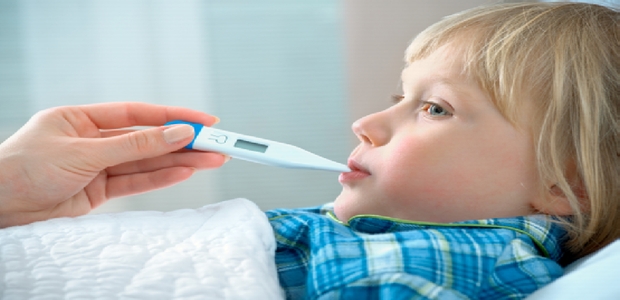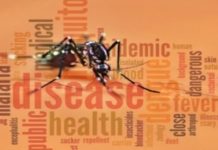During our young age, the body’s immune system is not strong enough to battle even some common diseases. In every season, be it summer, rainy or winter, children have more chances of falling sick compared to adults.
Your kid is bound to catch something this winter, so make sure you’re ready.
Get the lowdown on 10 common childhood illnesses—and tips for helping her recover faster. It doesn’t help that toddlers and preschoolers tend to touch everything, put their hands in their mouth, and play close to each other.
So basically, you’re fighting a losing battle. Still, the more knowledgeable you are, the better prepared you’ll be to identify what’s ailing your child and to help him feel better. Here are some of the most prevalent illnesses among young children and how to handle them.
Common Cold
You probably know the drill: Treat a mild fever, congestion, coughing, and a sore throat with lots of fluids and rest. If your child seems uncomfortable, children’s ibuprofen or acetaminophen can help reduce the fever (follow directions carefully, and consult your pediatrician if your child is under 6 months old), but steer clear of cough and cold medicines.
“These don’t really help, and the dosage can be confusing and might lead to an overdose,” says pediatrician Fred Hirschenfang.
Use saline drops or spray to moisturize your child’s nasal passageways and an aspirator to remove excess mucus. A cool-mist humidifier can be helpful, provided that you clean it regularly to prevent mold. Most kids bounce back from a cold within five to seven days.
Respiratory Synctial Virus (RSV)
RSV Kids under 2 are most susceptible. Respiratory synctial virus affects the lungs. In most cases, the symptoms are relatively minor and mirror those of a cold. But for preemies and children who have a compromised immune system, a congenital heart condition, or chronic lung disease, it can become serious in a hurry, causing either bronchiolitis (an infection of the small airways in the lungs) or pneumonia.
About 150,000 children a year are hospitalized due to RSV, according to the Centers for Disease Control and Prevention.
Call your pediatrician immediately if your child is wheezing, breathing very fast, or struggling to breathe, refuses to drink anything, appears to be extremely lethargic, or starts to develop a bluish tinge on her lips and in her mouth.
Roseola
Good news: It’s usually over by age 2, and always by kindergarten. Chances are your child’s Roseola symptoms will be so minor that you won’t even realize he’s under the weather. However, some kids come down with a high fever, congestion, coughing, and, later, a patchy rash that starts on the chest and spreads.
Although Roseola usually runs its course within a week, contact your paediatrician if your child’s fever spikes or lasts longer than three days. In the meantime, relieve his discomfort with children’s ibuprofen and keep him home until the rash disappears.
Gastroenteritis
It’s a lot worse than a tummy ache. This illness, better known as a stomach bug, causes vomiting, diarrhea, and abdominal pain. A variety of viruses, including norovirus—which often sweeps through child-care centers (not to mention cruise ships)—can cause gastroenteritis.
Most stomach viruses clear up within a few days to a week and require nothing more than rest and TLC. Still, you should make sure your child is drinking enough fluids to prevent dehydration. “The biggest mistake most parents tend to make is giving too much liquid at once, which a sick child may not be able to hold down,” says Maria Conwell, M.D., a paediatrician at The Children’s Hospital of Philadelphia.
Start with just a tablespoon of an electrolyte solution (such as Pedialyte) every 15 minutes and slowly increase the amount. If your child prefers Gatorade or juice, water it down by half since these drinks are high in sugar and can exacerbate diarrhea.
Once she feels like eating, offer her small amounts of bananas, rice, applesauce, and toast (the BRAT diet). If she keeps these down, slowly return her to regular meals. “You might also try feeding her Greek yogurt. It’s high in probiotics (which promote healthy flora in the gut) and contains less sugar than the regular kind”, says Dr. Conwell.
Hand-Foot-Mouth Disease
The tell-tale sign: Painful sores in the mouth and throat. The Coxsackievirus pops up mainly during the summer and fall and is highly contagious, passing from kid to kid through touch, coughs, sneezes, and fecal matter.
The sores are often accompanied by red blisters on the hands and soles of the feet that last seven to ten days. “If your child also feels achy, give him children’s ibuprofen or acetaminophen.
Ease his sore throat with ice pops and cold fluids, but avoid acidic juices, which can sting”, says Parents advisor Jennifer Shu, M.D., a spokesperson for the American Academy of Pediatrics. You should also watch for dehydration since some kids’ sores are so uncomfortable that they resist drinking at all.
In our next post, we will continue with 5 more diseases commonly seen in children.
Update
The next post – 10 Diseases Common in Children – Part II
-end-




































